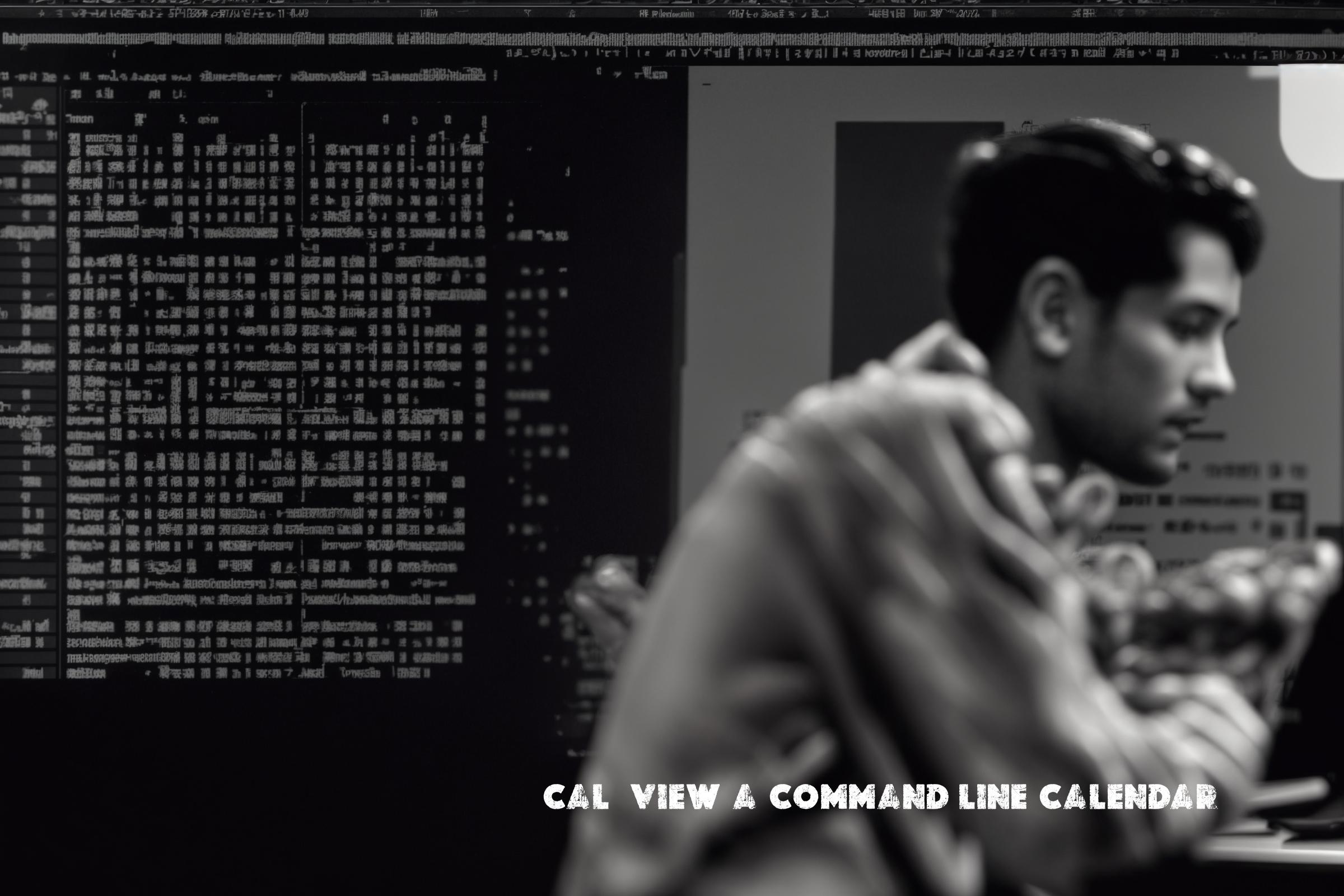
Introduction to cal (View a command-line calendar)
The cal command is a utility in Linux that is used to display a calendar on the command line. It provides a simple and convenient way to view the calendar for a specific month or year. The cal command is part of the util-linux package, which is a collection of essential utilities for Linux.
The cal command is primarily used for quickly checking dates, planning events, and scheduling tasks. It is especially useful for system administrators, developers, and users who work extensively on the command line and need a quick way to view the calendar without opening a separate application.
Official page of cal (View a command-line calendar): https://man7.org/linux/man-pages/man1/cal.1.html
The cal command is written in C programming language.
Installation on Supported Operating Systems
The cal command is included by default in most Linux distributions. To check if it is installed on your system, open a terminal and type:
cal
If the cal command is not found, you can install it using the package manager specific to your Linux distribution:
Ubuntu/Debian:
sudo apt-get install util-linux
Red Hat/Fedora:
sudo dnf install util-linux
CentOS:
sudo yum install util-linux
Examples of cal (View a command-line calendar) commands
Display the calendar for the current month:
cal
This command will display the calendar for the current month, with the current day highlighted.
Display the calendar for a specific month:
cal 10 2022
This command will display the calendar for October 2022.
Display the calendar for a specific year:
cal -y 2022
This command will display the calendar for the year 2022.
Display the calendar for a specific month and year:
cal 10 2022
This command will display the calendar for October 2022.
Similar commands and benefits
There are several other commands and utilities available in Linux that provide similar functionality to the cal command:
date: Thedatecommand is used to display the current date and time. It can also be used to format and manipulate dates.ncal: Thencalcommand is an alternative to thecalcommand that provides additional features, such as displaying the calendar in a different format and highlighting the current date.gcal: Thegcalcommand is a more advanced calendar utility that provides features like displaying holidays, customizing the output format, and supporting different calendar systems.
The cal command is lightweight and simple, making it ideal for quick calendar checks and basic scheduling tasks. It is widely used by system administrators, developers, and users who work extensively on the command line.
Scripts using cal (View a command-line calendar)
Script 1: Display the calendar for the current month
#!/bin/bash
calThis script will display the calendar for the current month when executed.
Script 2: Display the calendar for a specific month and year
#!/bin/bash
read -p "Enter the month (1-12): " month
read -p "Enter the year: " year
cal $month $yearThis script prompts the user to enter a month and year, and then displays the calendar for that month and year.
Script 3: Display the calendar for the current month and highlight weekends
#!/bin/bash
cal -hThis script will display the calendar for the current month and highlight weekends (Saturday and Sunday) when executed.
List of cal (View a command-line calendar) functions and constants
| Function/Constant | Description |
|---|---|
| cal | Displays the calendar for a specific month or year. |
| ncal | An alternative to the cal command with additional features. |
| gcal | A more advanced calendar utility with additional features. |
| date | Displays the current date and time. |
Conclusion
The cal command is a simple and convenient utility in Linux that allows users to view a calendar on the command line. It is widely used by system administrators, developers, and users who work extensively on the command line. The cal command provides a quick way to check dates, plan events, and schedule tasks without the need for a separate calendar application. It is lightweight, easy to use, and comes pre-installed in most Linux distributions. The cal command is written in C programming language and is part of the util-linux package.

This article incorporates information and material from various online sources. We acknowledge and appreciate the work of all original authors, publishers, and websites. While every effort has been made to appropriately credit the source material, any unintentional oversight or omission does not constitute a copyright infringement. All trademarks, logos, and images mentioned are the property of their respective owners. If you believe that any content used in this article infringes upon your copyright, please contact us immediately for review and prompt action.
This article is intended for informational and educational purposes only and does not infringe on the rights of the copyright owners. If any copyrighted material has been used without proper credit or in violation of copyright laws, it is unintentional and we will rectify it promptly upon notification. Please note that the republishing, redistribution, or reproduction of part or all of the contents in any form is prohibited without express written permission from the author and website owner. For permissions or further inquiries, please contact us.


